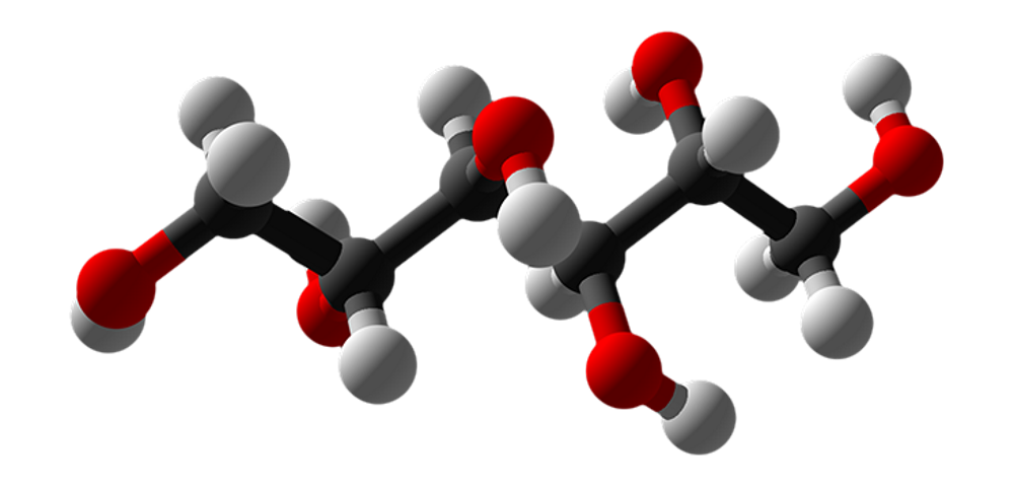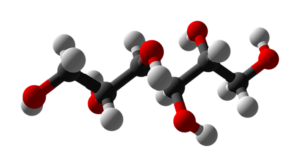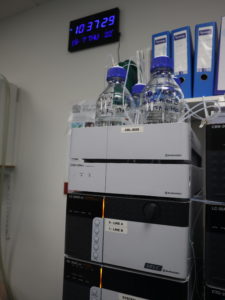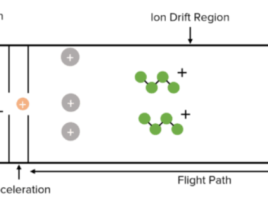
Analysis of Mannitol in Human Plasma
Mannitol is an osmotic diuretic that is physiologically inactive in humans and is found naturally in fruits and vegetables as a sugar or sugar alcohol. Mannitol raises the osmolality of blood plasma, allowing more water to move from tissues including the brain and cerebrospinal fluid into interstitial fluid and plasma (1).
Mannitol can be used to:
- Reduce Inter-cranial Pressure
Mannitol is administered intravenously and becomes a new solute in the plasma. Thus, increasing the tonicity of the plasma, which will pull water into the intravascular space from the brain parenchyma. The water will then be excreted through the kidneys.
- Reduce Intra-ocular Pressure
Due to an increase in the plasma's tonicity by mannitol, water from the vitreous humous of the eye is drawn out to the intravascular space. Finally, the water and mannitol will be excreted by the kidneys. The intraocular pressure is reduced as the vitreous humor’s water content decreases.
- Promote Diuresis in Acute Renal Failure
Intravenous mannitol is sometimes given to those who have acute renal failure. Even in acute renal failure, the kidneys are responsible for a large portion of mannitol excretion. As mannitol is expelled, it attracts water, boosting the patient’s water output and assisting in the prevention or treatment of fluid overload caused by oliguria in acute renal failure.
- Excrete Toxic Materials
Mannitol can be used to promote the excretion of harmful chemicals, substances, and medications, similar to how it is used to treat oliguria in acute renal failure.
- Prevent Intradyalytic Hypotension
Hemodialysis patients frequently experience intradialytic hypotension and dialysis disequilibrium symptoms. The reason for this is a decrease in intradialytic osmolality. By increasing serum osmolality, mannitol can help prevent intradialytic hypotension.
Administration
Mannitol is administered intravenously when used for medical purposes (2). Mannitol
is available in a variety of quantities, ranging from 5% mannitol (5 gm mannitol
dissolved in 100 mL solution) to 25% mannitol (25 gm of mannitol dissolved in 100 mL
of fluid) (2). The amount of mannitol administered depends on the type of condition
that is being treated (2).
- Increased Intercranial Pressure – dosages range from 0.25 g/kg to 2 g/kg
- Increased Intraocular Pressure – dosages range from 0.25 g/kg to 2g/kg
- Oliguria treatment – 0.2 g/kg
- Excretion of toxic materials – 0.25 g/kg to 2 g/kg
Side effects
- Heart failure
- The movement of free water into the intravascular region might cause or worsen electrolyte imbalances. Hyponatremia, hypokalemia, and hypocalcemia are some of the electrolyte disorders that might occur.
- Worsen cerebral edema. Frequent mannitol doses can cause mannitol to penetrate the blood-brain barrier, worsening cerebral edema because the mannitol that has leeched into the brain attracts water into the brain rather than out of it.
- Dehydration due to diuresis
Method
We have analyzed mannitol in human plasma. Using our HPLC instruments (Fig. 2), we have determined our LLOQ and ULOQ to be 7.5 and 1500 µg/ml, respectively.
To book our instruments please contact us here.
References
1. National Library of Medicine. Mannitol. (Internet) (Cited on Aug 2021) Available from: https://pubchem.ncbi.nlm.nih.gov/compound/Mannitol
2. StatPearls. Mannitol. (Internet) (Cited on Aug 2021) Available from: https://www.ncbi.nlm.nih.gov/books/NBK470392/




